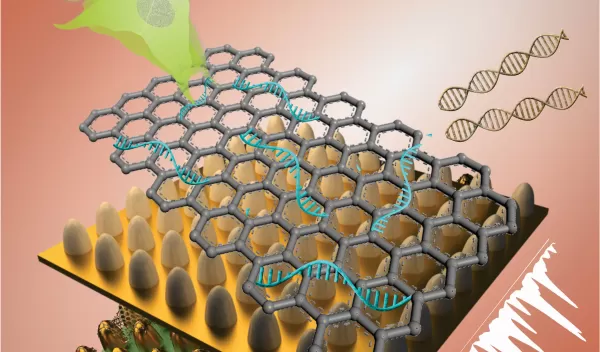
Better biosensor technology created for stem cells
NSF-funded researchers have created better biosensor technology using a newly developed instrument that may lead to safe stem cell therapies for treating Alzheimer's and Parkinson's diseases and other neurological disorders.
The technology, which features a unique graphene and gold-based platform and high-tech imaging, monitors the fate of stem cells by detecting genetic material (RNA) involved in turning such cells into brain cells (neurons), according to a study published in Nano Letters.
Because stem cells can become many different types of cells, stem cell therapy shows promise for the regenerative treatment of neurological disorders such as Alzheimer's, Parkinson's, stroke and spinal cord injury, with diseased cells needing replacement or repair. But characterizing stem cells and controlling their fate must be resolved before using them in treatments. The formation of tumors and uncontrolled transformation of stem cells remain key barriers.
"A critical challenge is ensuring high sensitivity and accuracy in detecting biomarkers -- indicators such as modified genes or proteins -- within the complex stem cell microenvironment," said senior author KiBum Lee of Rutgers University. "The technology, which took four years to develop, has demonstrated great potential for analyzing a variety of interactions in stem cells."
The scientists' unique biosensing platform consists of an array of ultrathin graphene layers and gold nanostructures. The platform, combined with high-tech imaging, detects genes and characterizes different kinds of stem cells with greater reliability, selectivity and sensitivity than today's biosensors.
The team believes the technology can benefit a range of applications. By developing simple, rapid and accurate sensing platforms, the researchers aim to facilitate treatment of neurological disorders through stem cell therapy. Carlos Murillo, a program director in NSF's Division of Chemistry, agrees, adding that "this type of research involving new instrumentation advances knowledge that helps the welfare of the nation by shedding light on brain disorders."


